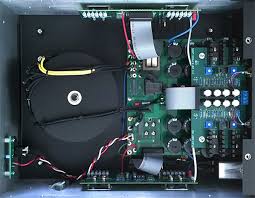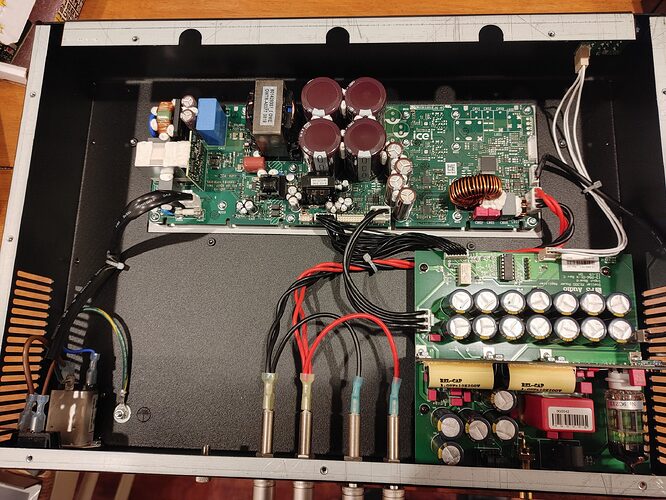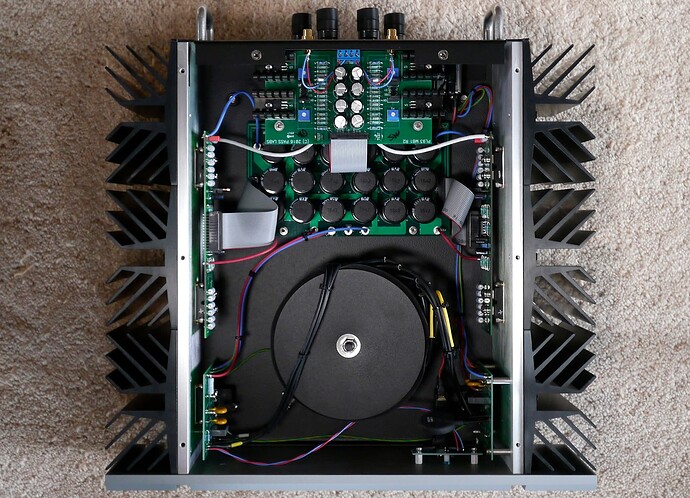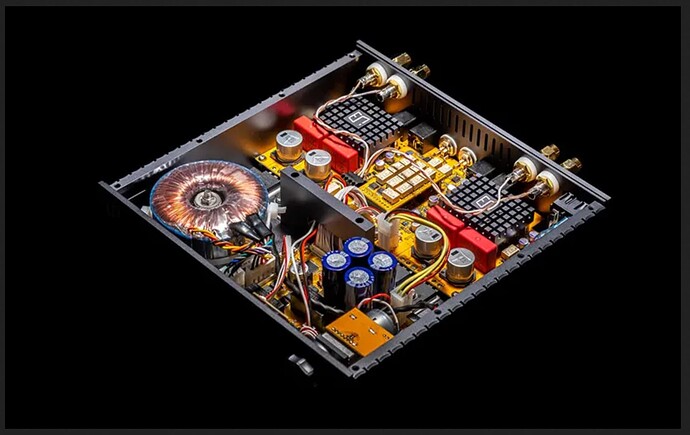How do you know that the cost of the parts are less? The class D module I believe is from ICE (Denmark) but everything else is designed and built by PS Audio. High quality components are not inexpensive… although may not look like it but that adds up.
It seems the only way to answer your question would be for PS Audio to provide you with a priced bill of materials. Is that what you’re asking for?
As an audio engineer, can’t you look at the photos and come up with a good estimate of parts cost?
To your point, Paul covered this topic in one of his videos. I recall him saying the retail price is a roll up of component costs, the cost of doing business, and margin.
Who knows how PSA cost of doing business compares to other domestic mfg, but you have to figure Octave is in there somewhere. I assume Octave will eventually have to stand on its own but I’m okay supporting its growth.
The M1200 has that custom tube input stage, which I assume is littered with quality components and I read somewhere that the Ice Power 1200 module was tweaked by or customized per Darren specs.
The casework is as simple as it can get but when you look inside you do have to wonder why it weighs so much. These things are heavy. The cynic in me originally supposed it was all about perceived quality as cost per pound. But the reasonable explanation provided by another was damping, especially given the tube. After another of Paul’s stories I gotta believe there’s still a couple of extra pounds for perceived value, but what do I know.
I remember having a similar conversation with myself after seeing under the hood of the Pass Labs XA25. It’s quite a bit less than the M1200 but at the time I couldn’t understand how so few parts could cost so much.
I suppose there’s also a quantity v quality argument in here that I can understand if someone who knows quality components explains to me. But I’m not going to recognize them on my own.

If the case looks empty, the price should reflect that. Pretty easy concept.
It’s pretty difficult to try and figure this out from the outside, but here’s what you can rely upon. Look inside one of our Class A/B amplifiers like the BHK600 or 300 or a Power Plant AC regenerator and you’ll see the insides are stuffed to the brim full of capacitors and PCBs and power transformers. Hundreds of parts. Clearly, from this viewpoint, there is a huge value proposition going on because it is stuffed full of components (at least this is what it would appear to be from your viewpoint comparing sparsely populated Class D amps to highly populated AB amps).
But here’s the thing. As mentioned, all of our products follow a simple pricing guideline. They reflect a fixed multiple of their COGS (cost of goods sold).
So, from a value perspective, a fully stuffed-to-the-gills A/B amp or Power Plant from us is exactly the same value as a sparsely populated Class D hybrid even though it doesn’t appear so.
I would be careful trying to come up with judgments based on appearances of builds. Where you’ll really run into problems is when you get into the digital realm. There, tiny 1” square parts that look innocent enough can cost he amounts of money and then how do you judge?
https://shop.icepoweraudio.com/product/700as1/
Just the amp section, no input stage, which I suspect gives the amp its PS Audio sound. Then there are the interconnect cables and wires. Much cheaper to build it yourself but it wouldn’t sound as good or look as good.
For the 1200
https://shop.icepoweraudio.com/product/1200as1/
Again just the power amp, no tube input stage or PSAudio tuning/secret sauce
Also remember that low volume (tens or hundreds not ten thousands or higher) make the individual piece prices a lot (10x or more) higher.
In automotive parts the piece that they pay <$1.00 each for in production costs $10 or more each pre or post production in the hundreds not millions.
I always say to people who question product pricing to “make one yourself” and see what is really involved in the process.
You could also just buy a consumer grade piece of kit for a frw hundred $ and move on instead of worrying over the cost of what you think you might want.
The used market is also a good place to look. Usually stereo pieces are 50% or less of retail prices.
What other high-end manufacturer will the CEO instantly respond to you? That alone has value. Is their stuff expensive? Yes. Sometimes you get what you pay for.
Judging quality by looking under the hood to see how many parts there are or how complex it looks is a mistake.
Take a stock US 1960’s V8 muscle car engine that has been carefully rebuilt by a master mechanic - may not look like much when you open the hood. Now, take a chromed out factory crate engine with all the braided hoses and aftermarket candy (heck, it even has VU meters!!). The teenager will go for the crate engine and will pay more for it, the experienced motorhead will take the former and have something of value for a long time to come.
It’s a fine, very fine sounding and most reliable amplifier. The key to its magicis to mate it with relatively efficient speakers.
There’s another component to the M1200 “value” equation in addition to all the other factors discussed so far IMO. That factor is fidelity superiority resulting from the intellectual effort, skill, and talent making this component stand out from its competitors. I don’t think a manufacturer can bank on that factor allowing too great a price differential from competitors but it is a factor. Some components can command a higher price because they just perform better. Another example of this is the Enleum A-23r integrated amp I think. It’s a tiny, low powered amp that costs $6250.00 US but it garners universal praise when used as intended.
Nelson Pass’ FirstWatt amps also seem to fit into this category of amps that look a bit bare inside but shine nonetheless because of unique intellectual properties.
Additionally, you also can’t discount the factor of having two cases in the purchase price. Casework is a surprisingly large factor in manufacturing costs. PS Audio could have used the stereo version of the IcePower module and stuffed it into one case but then performance would have suffered a bit.
Paul, and everyone else, thank you for your reply and for giving a better understanding things from the manufacturing side.
I am actually considering replacing my NAD 658 pre amp with your Stella Gold preamp in the future.
If you’re actually interested in looking into a Class D with quality construction and a box full with parts and a linear power supply look at Nuprime. This is one of their latest efforts.
They also sell several models of mono amps with similar build quality.



